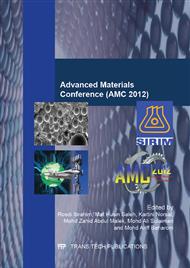p.169
p.175
p.180
p.184
p.191
p.199
p.206
p.213
p.218
Estimation of Burst Pressure of Corroded Pipeline Using Finite Element Analysis (FEA)
Abstract:
One major concern in maintaining pipeline structural integrity is failure due to corrosion defects. Various tests and codes had been established to assess the corroded pipelines. Burst test is one of the tests being conducted in the lab to assess the integrity of the pipelines. The advancement in computer technology had made the Finite Element Analysis (FEA) capable to simulate the burst test numerically. The objective of this study is to estimate the burst pressure of a corroded pipeline by using FEA. First, Ultrasonic Testing (UT) scan was carried out to establish the corroded pipe profile. FEA was then conducted to simulate the experimental procedure of the actual burst test. Several models were built and simulated by considering the number of defects, their depth and shape as the varying parameter in each simulation. All models were properly constrained and pressurized internally in determining the burst pressure (pb) of the corroded pipeline. The result obtained by FEA was analyzed and compared to the actual burst test, ASME B31G and DNV-RP-F101 codes. Lastly the best model of FEA was proposed.
Info:
Periodical:
Pages:
191-198
Citation:
Online since:
January 2014
Keywords:
Price:
Сopyright:
© 2014 Trans Tech Publications Ltd. All Rights Reserved
Share:
Citation:


